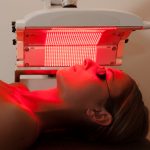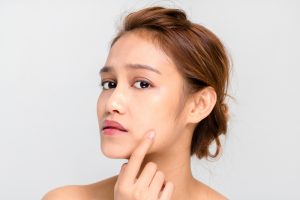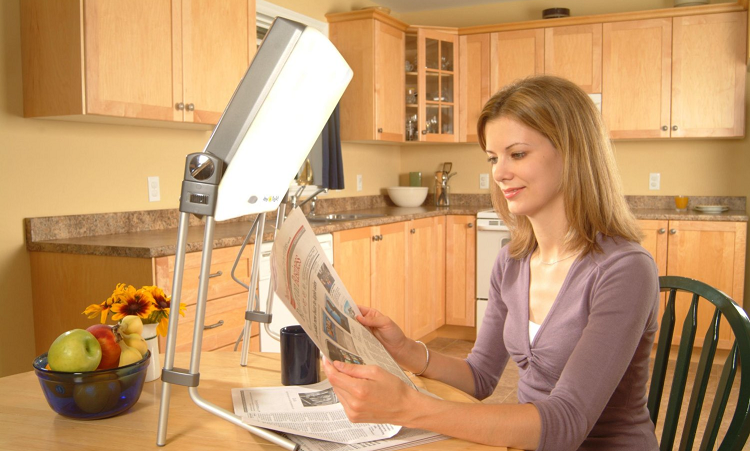Tanning beds are commonly associated with anti-aging and skin rejuvenation. However, when it comes to long term effects, tanning beds are not the way to go! While they may help clear some acne, promote energy, and makes you feel tan and young, they also promote skin cancer, wrinkles and fine lines. Red light therapy can help you with anti-aging and skin rejuvenation in a harm-free and natural way that actually reduces wrinkles and fine lines, treats acne, promotes energy and vibrant skin, and so much more! Plus, red light therapy can treat chronic pain and symptoms related to it! Red Light Therapy may be the new magical elixir…except this actually works.
Red Light Therapy For Cosmetic Purposes…
Red Light Therapy devices can be used to help slow down our natural cosmetic aging. Treatment can reduce fine lines and wrinkles while also tightening and firming the skin. Proper treatment can ridf age spots and hyper pigmentation, which usually occurs on the face, neck, and hands. There’s no need for face lifts when you can go the natural route. Red Light Therapy can also diminish blemishes and red spots, along with acne. Thought you could never get rid of those blackheads around your nose? Or those zits that keep showing up around your chin? How about those scars that acne left you with? Regularly scheduled treatment can help you say goodbye to those.
Red Light Therapy For Severe Conditions…
Medications always come with a large slew of side effects and everyone reacts differently. Red Light Therapy has proven to have few to no side affects while effectively treating serious conditions that people struggle with every day.
Proper light treatment can be used to treat skin problems you thought you would never get to say adios to. For example, burns and scars. Over time, Red Light Therapy can treat your skin and bring it back to its once undamaged self. It can also help with more serious conditions such as Rosacea, Eczema, Athlete’s Foot, Psoriasis, and more. If you are currently taking medication for any of these conditions or similar ones, it may be worth discussing Red Light Therapy with your doctor and finding a better option for your body.
Red Light Therapy For Pain…
It probably goes without asking, but who wants to take pain killers every day? They’re dangerous and make your stomach a wreck. An even better question: who can lead a happy life when living with chronic pain? The answer is no one.
Red Light Therapy is very commonly used for pain relief. It’s used in doctor’s offices all over. Athletes swear by it, chiropractor’s praise it, and it’ll be hard to find someone with a negative opinion on the matter. It’s gentle, drug-free, non-invasive, and 100% awesome. In most cases, it has proven extremely effective in reducing pains and aches. In some cases, Red Light Therapy has actually totally eliminated aches and pains.
Red Light Therapy can treat herniated and bulging disks, muscle related back pain, osteoarthritis, pulled and strained muscles, Fibromyalgia, muscle spasms, inflammation, bone fractures, chips, and sprains, nerve injuries, neck pain, neck stiffness, and more.
Forms Of Red Light Therapy…
Red Light Therapy can be used in a few different forms. The first decision that needs to be made is whether treatment is preferred at home or not. This answer can rely on the severity of the condition, budget, or what is being treated on the body.
If possible, it will be easier and more cost effective to perform light therapy treatments at home. Doctor’s office light therapy sessions can be expensive as well as difficult to work into a daily schedule. If Red Light Therapy treatments are done at home, you can do them at your own convenience, have a one-time cost, and be performed as many times as deemed necessary. There are hand held devices that are great for treating acne. There are also pads and wraps that are great for muscle and joint relief. If space isn’t an issue, there are large panels that can be used to treat a vast area on the body.
Tanning salons have recently undergone major criticism, making them frowned upon and practically irrelevant in the past few years. The salons have caught up with the times and many of them have been replacing the bulbs in their tanning beds with proper Red Light Therapy bulbs. If you are looking for an all over body treatment, this may be a good option for you. It won’t be very cost effective, but lying on a bed once a week for a set amount of time could help reduce body acne, cellulite, wrinkles, etc. It can also help with aching muscles, severe conditions such as Fibromyalgia, arthritis, and more.
How It Works…
According to JustLuxe, a lifestyle and wellness website…
“Red light easily penetrates the skin, boosts circulation and brings more blood and nutrients to the area. It also stimulates vital collagen and elastin production. Collagen helps plump the skin, while elastin firms the skin. The red light is energizing and repairing damaged cells, stimulating collagen and elastin and giving the skin back its youthful look. Home devices for skin rejuvenation typically use visible red light at a wavelength of 660nm – That penetrates tissue to a depth of about 8-10 mm – Making it more beneficial for treating problems close to the surface of the skin.” (JustLuxe.com)
As for chronic pain and muscle and joint relief, infrared light is always used. This form of light penetrates deeper into the body and repairs cell components. The light also increases the production of endorphins. This blocks the chemicals that transmit pain. If you’re using an at-home treatment, the infrared light typically penetrates the skin at 880 nanometers at a depth of 30-40 millimeters. Devices or beds in doctors’ offices will likely be stronger because they can be more controlled.
A Word From The Experts…
“Penetrating red light is possibly the fundamental anti-stress factor for all organisms. The chronic deficiency of such light is, I think, the best explanation for the deterioration which occurs with aging.” –Ray Peat
“The important biological effects of red light were known even back in the 19th century, yet very few of the biologists seem to know about those findings nowadays. The knowledge of the physiological effects of light is mainly limited to blue light’s effects on circadian rhythm, yet the importance of red and near-infrared light is probably a more important topic for the public health. The general therapeutic usefulness of red light reminds me of the therapeutic uses of thyroid hormone, the topic about which I’ve written before. This connection is actually quite logical, considering that thyroid hormone also increases Cox activity, by increasing the cardiolipin concentration in the mitochondria.[76,77] Time will tell whether various treatments based on red and near-infrared light will gain popularity in the near future. But they should, because the study results are thoroughly so positive.” -Vladmir Heiskanen




